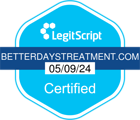Understanding Medication-Assisted Treatment
Addiction is a complex and chronic brain disease that affects millions of individuals worldwide. To comprehend how Medication Assisted Treatment (MAT) works, it’s essential to first understand the nature of addiction and dependence. Addiction often involves the brain’s reward system, primarily driven by the release of neurotransmitters like dopamine. This leads to feelings of euphoria and pleasure, reinforcing the use of the addictive substance. With continued substance use, the brain becomes tolerant to the substance’s effects, requiring more of it to achieve the desired high. Additionally, when the substance is absent, withdrawal symptoms can be severe, driving individuals to use again.
Role of Medication-Assisted Treatment
Medications used in MAT play a crucial role in addressing addiction and dependence. They are carefully selected based on the specific substance being abused, and they work in various ways to support recovery. For OUD, medications like methadone, buprenorphine, and naltrexone are commonly used. These medications target opioid receptors in the brain, reducing cravings and preventing withdrawal symptoms.
Medications such as acamprosate, disulfiram, and naltrexone can help individuals with AUD by either reducing cravings or making alcohol consumption unpleasant. MAT is most effective when combined with comprehensive counseling and support services. This integrated approach addresses both the physiological and psychological aspects of addiction Counseling sessions, including cognitive-behavioral therapy (CBT) and motivational interviewing, help individuals identify triggers, develop coping strategies, and make long-lasting behavioral changes. MAT programs often encourage participation in support groups like Alcoholics Anonymous (AA) or Narcotics Anonymous (NA), fostering a sense of community and accountability.
Benefits and Success of Medication-Assisted Treatment
MAT has shown remarkable success in helping individuals overcome addiction and maintain recovery. Understanding the science behind MAT can provide insight into why it’s a valuable treatment option. Medications in MAT help stabilize brain chemistry, reducing cravings and the risk of relapse significantly. By addressing both the physical and psychological aspects of addiction, MAT can lead to improved overall well-being, including better relationships, employment prospects, and overall health. Studies have demonstrated that individuals engaged in MAT have lower mortality rates compared to those who do not receive such treatment, especially in the case of opioid addiction. In conclusion, Medication Assisted Treatment (MAT) is rooted in a deep understanding of addiction’s neurobiology.
By using medications to stabilize brain function, MAT helps individuals regain control of their lives. When combined with counseling and support, it offers a comprehensive approach to addiction recovery, improving the chances of long-term success and a brighter future.

